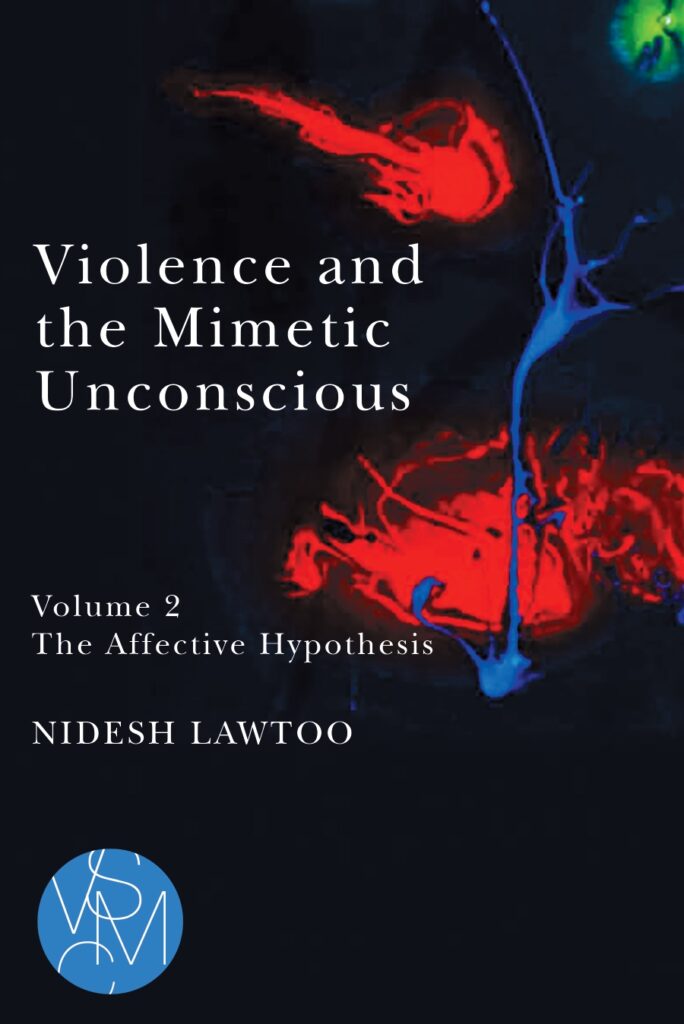What a better place to conclude the Homo Mimeticus project than the ancient Agora of Athens were philosophy was born? It is in fact here that Socrates among many other philosophers conceived of philosophy not only as a love of wisdom but also as a way of life, as Pierre Hadot would say.
(Nieuw) Fascisme: Besmetting, gemeenschap, mythe

Kunnen we ons immuun maken voor het (nieuwe) fascisme (Noordboek 2024)? Nidesh Lawtoo betwijfelt het. Onze rationaliteit is simpelweg niet opgewassen tegen de besmettelijkheid van de mythe. Of we het nu willen of niet: we praten elkaar na (mimesis). En nieuwe media versterken de fascistische boodschap. Toch is er hoop. We kunnen ons bewust worden van ons mimetische gedrag. Als we onszelf doorzien, wordt het mogelijk om de mythe anders te framen en de angel eruit te trekken. Interviews in Trouw & Mare.
HOM Videos 10: Ancient Foundations for Mimetic Studies II
In this last episode of HOM Videos, Nidesh Lawtoo returns to the place where mimetic studies begun: the Great Theatre of Dionysus in Athens. It is in fact here that mimesis was not simply represented but, rather, performed by actors on mimes endowed with the capacity to generate a mimetic, dramatic, or Dionysian pathos in the audience as well.
HOM Video 10: Ancient Foundations for Mimetic Studies I
In order to bring the Homo Mimeticus project to an end and launch the field of mimetic studies, Nidesh Lawtoo (prof. at Leiden University) re-turns to the place where theories of mimesis began. Shot on the Acropolis in Athens, Greece, ep. 1 recalls that philo-sophia, or love of wisdom, is born out of a mimetic agon with a mythic wisdom that found in Athena a primary source of inspiration
Rebirth of Homo Mimeticus
In this discussion on the topic of “The Art of Imitation and the Desire for Violence: The Rebirth of Homo Mimeticus,” we have tried to grasp the emerging concepts around mimesis, new age violence, and the return of the homo mimeticus.
Violence and the Mimetic Unconscious: vol. 2 The Affective Hypothesis

Representations of violence have subliminal contagious effects, but what kind of unconscious captures this imperceptible affective dynamic in the digital age? In volume two of a Janus-faced diagnostic on violence and the unconscious, HOM PI Nidesh Lawtoo traces a genealogy of a long-neglected, embodied, relational, and highly mimetic unconscious central to the problematic of (new) media violence. Now OUT with MSU P!
HOM Videos ep.9, The Neuroscience of Mimesis: Vittorio Gallese. II. Mirror Neurons Now & Then
In this second episode of HOM Videos on The Neuroscience of Mimesis, Vittorio Gallese discusses with Nidesh Lawtoo important precursors of the discovery of mirror neurons in aesthetics, phenomenology and the tradition of the mimetic unconscious: from Nietzsche to Lipps, Merleau-Ponty to Aby Warburg, Charles Féré to Pierre Janet, a number of fin-de-siecle philosophical physicians were sensitive to the mirroring relation between movement and sensation later confirmed by the discovery of mirror neurons.
HOM Videos 9, The Neuroscience of Mimesis: Vittorio Gallese. I History of a Discovery
As HOM Videos moves toward a conclusion, Nidesh Lawtoo travels to Parma, Italy, to interview neuroscientist Vittorio Gallese who, along with Giacomo Rizzolatti and his team, discovered mirror neurons in the early 1990s. In the first of four episodes on a major contribution to the mimetic turn, Gallese retells the history of the discovery of mirror neurons in nonhuman and human primates, discusses what more is known about mirroring mechanisms 30 years later, and begins to lay out the theoretical implications of embodied simulation for the transformations of homo mimeticus in the 21st century.
Violence & the Oedipal Unconscious: Book Launch
In this book launch of a diptych on Violence and the Unconscious, Nidesh Lawtoo, Marina Garcia-Granero and William Johnsen present the latest output of the ERC project Homo Mimeticus. Rather than entering the debate on media violence from a quantitative perspective, the book retraces the genealogy of the concept of catharsis that still informs, or misinform the popular imagination. The launch contextualizes the book within mimetic studies and discusses key thinkers of violence and the unconscious, from Aristotle to Nietzsche, Freud to Girard, among others. More information here: https://msupress.org/9781628964851/vi…
The Patho-Logies of Exclusion: Politics, Media, New Fascism

In this chapter based on the Raymond Schwager Lecture Nidesh Lawtoo delivered at the University of Innsbruck in 2019, he revisits his work on (new) fascism from the angle of the patho-logies of exclusions that turn mimesis into pathological scapegoating mechanism directed against minorities and immigrants. Chapter available HERE.
